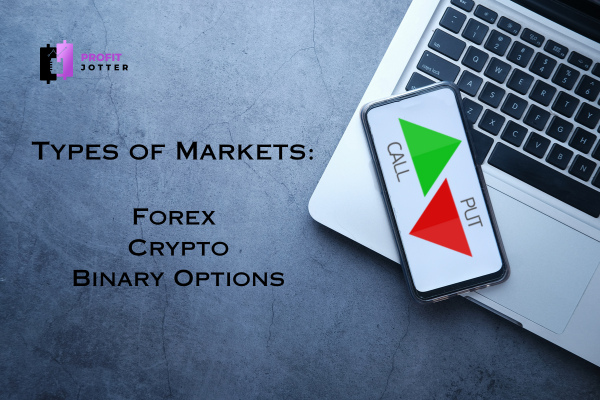The spread is the difference between the bid price (the price at which you can sell an asset) and the ask price (the price at which you can buy an asset).
This reflects the cost of a trade’s execution and becomes a major factor in determining the overall cost of trading.
For example, if the EUR/USD is bid at 1.1050 and is asking at 1.1053, then the spread is 3 pips wide because 1.1053 – 1.1050 = 0.0003 or 3 pips.
Thus, for you to have a break-even trade, the market should move at least 3 pips in your favor after entering the position.
Types of Spreads
There are two types of spreads that Forex traders deal with;
Fixed Spread
A fixed spread is the same for all market conditions.
The predictability of trading costs is presented through a fixed spread.
It is also easy for traders to plan because of the avoidance of continuous fluctuation in transaction costs.
Fixed spreads are usually provided by the broker under normal market conditions.
Variable Spread
A variable spread, however, changes with market conditions.
Such market conditions include liquidity and volatility.
When there is high volatility or low liquidity, variable spreads can increase sharply and boost trading costs.
For example, during big economic announcements or geopolitical events, the spreads would be wide because of higher uncertainty in the markets.
How Spreads are Calculated
The mechanism of operation of a spread is best understood when one knows how it is calculated:
1. Bid Price: The highest asset price a buyer is willing to pay.
2. Ask Price: The lowest asset price a seller is willing to accept.
3. Spread Calculation: A spread is calculated by the following formula:
Spread = Ask Price – Bid Price
Suppose the ask price for GBP/USD is 1.3000 and the bid price is 1.2995; then
Spread = 1.3000 – 1.2995 = 0.0005 or 5 pips
Factors Affecting Spreads
Several factors affect the width of spreads in financial markets, including:
i. Market Liquidity
Liquidity denotes the condition of being able to easily buy or sell an asset without significantly affecting its price.
The higher the liquidity, the tighter the spread because there is more buying and selling interest in the market.
For that matter, a low level of liquidity may tend to widen the spread as fewer participants would be willing to trade.
ii. Market Volatility
Volatility is essentially a measure of how much the price of an asset moves around over time.
The width of a spread tends to expand when the markets are highly volatile, as this has market makers pricing in increased risks.
For example, if a big economic report surprises traders, then the spread may increase temporarily until the market has settled.
iii. Economic Events
Various economic indicators, like employment reports, inflation data, and announcements of central banks, influence the spreads.
For instance, in front of a major announcement, traders could look forward to increased volatility and, thus, widen their spreads as a method of risk reduction.
Spread’s Impact on Trading Costs
Understanding how spreads affect your trading costs is crucial for the development of any trading strategy:
Break-Even Point
This spread is the difference traders need to consider anytime they enter a trade.
At this point, if you buy an asset at its ask price and immediately sell it at the bid price, the result would be a loss of just the amount of the spread.
For instance:
If you buy EUR/USD at 1.1053 and immediately sell it at 1.1050, you incur a loss of 3 pips.
Profitability
Wider spreads mean you have to wait longer for prices to move enough in the right direction to realize a profit from your trades.
For day traders or scalpers who rely on small price movements, it can be particularly challenging.
Strategies to Manage Spreads
Here are some strategies traders can use to manage spreads effectively:
i. Choose Your Broker Wisely
Different brokers have different spreads according to their pricing models.
Some may have low fixed spreads, but others may provide variable spreads, which change with market conditions.
A bit of research and choosing a broker that offers competitive spreads may go a long way in saving your trading costs.
ii. Trade During Peak Hours
Trading during peak market hours, which means when the markets are most liquid, helps narrow the spreads.
This means that a forex trader should focus on whenever there is some overlap between major markets like London and New York.
iii. Use Limit Orders
Using limit orders instead of market orders can help you avoid unfavorable prices caused by wide spreads during volatile conditions.
The limit order lets you specify your entry or exit point for a trade.
Conclusion
Understanding what a spread is and how it works is key to the trader’s business.
The ability to recognize how differing elements in the marketplace impact spreads will enable the traders to capitalize on this tool and achieve more favorable profit margins.
As you progress through your trading career, remember the importance of understanding spreads in cost management and in improving your strategy against the market conditions.




